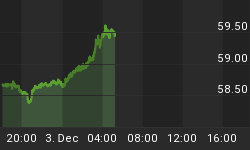Following is an excerpt from the Global Precious Metals guide on "How to Own Precious Metals." The complete paper in PDF from is available here: ![]() How to Own Precious Metals
How to Own Precious Metals
The purpose of this paper is not to make the case for investing in precious metals (plenty has already been written on this topic), but rather to lay out the options available to the investors who has made up his mind to do so.
Before going into any great detail, let's pause for a moment to take a helicopter view of our financial system in order to better understand gold's position in it. Most people are well aware that gold is a scarce resource but are usually not aware of the sheer volume of other financial products which currently exist. The following chart provides an overview of our financial system and lays the case for gold quite succinctly.

Sources:
- Bank of International Settlement, OTC derivatives statistics at end-June 2013; Bank's annual reports.
- Savills World Research, Around The World In Dollars And Cents, 2014.
- Mc Kinsey & Company, Financial Globalization: Retreat or Reset?, 2013.
- World Federation of Exchanges, 2014.
- Estimated using M1 data from the Central Banks of: Euro Area, United Kingdom, United States, Japan, China, Australia, Brazil, Canada, India, Russia.
- Estimated using the quantity of gold ever mined of 171,000 tons from the World Gold Council, 2013.
A financial meltdown would see the upper layers of the pyramid being liquidated in a panic that would likely involve the opaque over-the-counter derivatives markets. A few of the world's largest banks hold the bulk of all derivative contracts, which have notional amounts in the 10s of times their assets and 100s of times their market capitalizations.
Whilst the upper layers evaporate as the market for most IOUs simply stops existing, capital will seek refuge in the "most marketable good" or the most liquid asset further down the pyramid. Many people holding assets located at the top of the pyramid will lose parts of their capital on the way down in the flight to liquid and to less-risky assets. After most of their wealth literally has evaporated, they will finally come to the conclusion that gold is the ultimate store of value.
A look at recent history reminds us of the intrinsic value of paper money, which is the paper that it is printed on. One picture in support of this case is certainly worth a thousand words.

"Paper money eventually returns to its intrinsic value - zero." ~ Voltaire
Download the complete paper: ![]() How to Own Precious Metals
How to Own Precious Metals
















